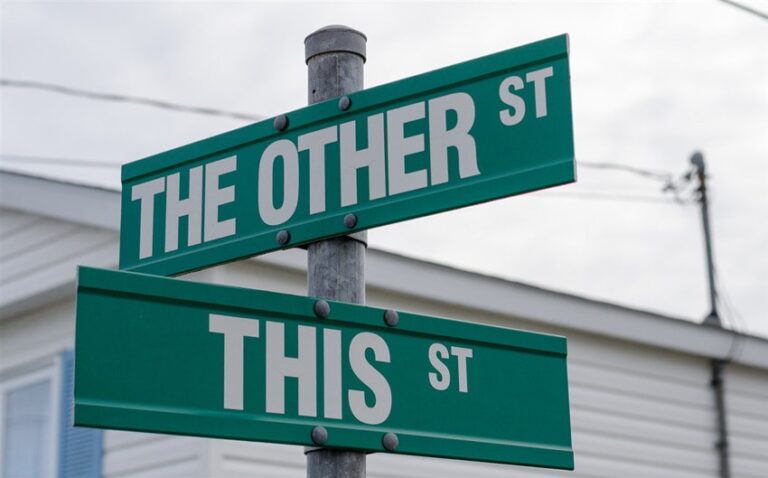Why Are Rental Cars So Expensive? What Changed and Why It Stuck
The last time I tried to rent a car, I felt like I was booking a luxury suite by accident. What used to cost me $30 a day suddenly looked more like $120—before taxes, insurance, or surprise airport fees. I kept thinking: why are rental cars so expensive now? What broke, and more confusingly, why hasn’t it been fixed?
It Started With the Pandemic—and a Massive Sell-Off
Like most travel-related industries, the rental car business went into a tailspin in early 2020. Borders closed, vacations vanished, and flights were canceled left and right. With travel at a near standstill, rental car companies had a crisis on their hands: thousands of cars sitting unused, bleeding cash by the day.
In response, major rental agencies did what they had to do to survive: they sold off their fleets. Fast. Hertz, which would go on to file for bankruptcy protection, sold nearly 200,000 vehicles. Other companies followed suit. It was like watching a fire sale at an auto dealership—but nationwide. Cars that would’ve normally been rented were liquidated for quick cash, just to stay afloat.
At the time, it made sense. No demand, so why hold onto inventory? But that short-term survival strategy created a long-term shortage. Because when travel started to rebound, the cars were gone—and getting new ones wasn’t so easy.
Then Came the Chip Shortage and Vehicle Scarcity
Right as rental companies tried to rebuild their fleets, the car manufacturing world hit a wall of its own: the global semiconductor chip shortage. These chips are tiny, but they power critical vehicle functions—everything from braking systems to infotainment displays. And thanks to disrupted supply chains, increased demand for home electronics, and slowed factory production, automakers couldn’t get enough of them.
Car production stalled. Dealerships saw their lots go empty. And rental car companies, which typically buy vehicles in bulk at discounted prices, were pushed to the back of the line. Automakers prioritized individual consumers who were willing to pay full retail—and sometimes even above it. That left the rental industry scrambling to find new cars, often paying higher prices and waiting longer than ever before.
The result? Inventory stayed low, even as demand shot through the roof. With fewer cars to go around, rental companies raised prices to match the imbalance. And because restocking fleets takes time—especially when everyone’s trying to do it at once—the shortages lasted well beyond 2021. We’re still feeling it now.
High Demand Never Really Slowed Down
At first, people were cautious. But once vaccines rolled out and lockdowns eased, travel didn’t just return—it surged. Domestic tourism exploded. Road trips became the vacation of choice. And people who used to rely on public transit or rideshares now wanted their own wheels to feel safe.
Airports got busy again. So did rental counters. But the supply of cars wasn’t there to meet the new demand. And unlike hotel rooms or flights, which can scale up relatively quickly, cars take time to build, buy, and prepare for use. Rental companies couldn’t snap their fingers and make more vehicles appear.
That mismatch has kept prices high, especially during holidays, school breaks, or event weekends. Even in off-seasons, you’re paying more than before—not just because the car is scarce, but because the rental company knows you’ll likely pay it anyway. Supply might slowly be recovering, but demand? It’s still full throttle.
The Industry Has Changed—and Consolidated
Here’s something most people don’t realize: the U.S. rental car market is controlled by just three major parent companies. Enterprise Holdings owns Enterprise, Alamo, and National. Avis Budget Group owns Avis, Budget, and Zipcar. Hertz Global Holdings owns Hertz, Dollar, and Thrifty.
That means when you’re comparing rates across “different” companies, you’re often choosing between brands owned by the same parent. This kind of market consolidation reduces competition. And when competition fades, so does price pressure. There’s little incentive to undercut the other guy when the other guy is your sister company.
These companies also streamlined their business models during the pandemic. They cut jobs, closed locations, and tightened operations. As demand returned, they kept things lean to maximize profit. In other words: fewer employees, fewer cars, higher margins. It’s more efficient for them—but not always better for us.
And after years of conditioning customers to pay more, they’ve learned something crucial: people will still rent, even at triple the price. So those higher rates? They’re not a glitch anymore. They’re part of the system.
Insurance, Fees, and the Add-On Trap
One of the most painful parts of renting a car isn’t the base rate—it’s everything else they tack on. You think you’re getting a $60 deal until you start checking out. Suddenly there’s a $25-a-day collision damage waiver, $13 for roadside assistance, $12 for a second driver, and an extra fee for being under 25 (or sometimes over 70).
And then there’s airport surcharges, facility usage fees, local taxes, tire and battery disposal fees (seriously), and the mysterious “concession recovery fee” that nobody ever fully explains. By the time you’re done, your total is double what you expected—and you’re not even holding the keys yet.
The insurance add-on is one of the biggest traps. Many people aren’t sure whether their personal car insurance or credit card covers rentals, so they say yes “just in case.” Rental reps are trained to upsell. They often use fear-based language—”If anything happens and you’re not covered, you’re responsible for the full cost of the vehicle.” It’s stressful, and that stress translates into more dollars for them.
It’s not that these coverages are bad. Sometimes they’re genuinely useful. But the way they’re pitched—and how hidden they are in the booking process—makes the whole system feel slippery. Transparent pricing would go a long way, but for now, it’s up to travelers to stay sharp.
Used Car Prices Affect Rentals Too
Rental companies don’t keep their cars forever. They usually sell them after 1–2 years in service, often through used car dealerships or their own “certified pre-owned” programs. But here’s the thing: the used car market hasn’t been normal either.
Post-pandemic, used car prices spiked to historic highs—up nearly 40% in some cases. That meant rental agencies paid more for the cars they needed to replenish their fleets. It also meant they were cautious about how and when to sell their older cars, knowing they’d be taking a hit on depreciation or resale profits.
That cost—buying cars at inflated prices and struggling to sell them for a good return—got passed right along to customers. Higher operating expenses mean higher rental prices. Even now, as used car prices slowly normalize, rental agencies are still trying to recover lost revenue from those volatile years.
It’s all connected. The price you pay at the counter isn’t just about your three-day road trip. It’s a reflection of an entire supply chain that’s still healing from a historic disruption.
Rental Companies Are Making Up for Lost Time
During the worst of the pandemic, rental agencies lost billions. They cut staff, liquidated assets, and took on debt just to survive. Now that travel is back, they’re focused on profitability—and that means charging more whenever they can.
This isn’t speculation. Financial statements from major rental companies show stronger margins and increased earnings per vehicle in the last two years. They’re making more money from fewer cars and fewer employees. It’s business math, not personal—but it still affects every traveler at the checkout counter.
Unless something disrupts the current model—like major new competitors entering the market or government pressure on pricing—it’s likely that high rental car prices will remain part of the “new normal” for the foreseeable future.
So… Will Rental Prices Ever Go Back Down?
Short answer? Probably not all the way. The $20-a-day rentals many of us remember from the early 2010s were the result of an industry operating with razor-thin margins, large fleets, and a race to the bottom on pricing. That model proved unsustainable when disaster struck. Today’s system is more streamlined—and more expensive.
Could rates dip with more competition or increased supply? Sure. But the days of ultra-cheap rentals might be behind us for good. Higher operating costs, tighter inventory control, and a stronger focus on profitability have changed the game.
That doesn’t mean you’re helpless, though. There are still ways to save:
- Book early: The closer you book to your trip, the higher the price.
- Compare off-airport locations: Sometimes just a few miles away can save you 30–40%.
- Use credit card perks: Many cards include rental insurance and discounts.
- Join loyalty programs: They often come with perks, upgrades, or fee waivers.
- Decline unnecessary extras: Know your insurance coverage before you arrive.
Being informed and strategic doesn’t erase the sting of high prices—but it helps you avoid being blindsided. And in this new era of travel, that’s about as close to a win as I’ve found.
Renting a car used to feel like the least complicated part of planning a trip. Now, it feels like one of the most unpredictable. But knowing why the price tag ballooned at least gives me some peace—and a tiny bit of leverage next time I’m clicking through a sea of upsells, wondering if I should just take the bus instead.






